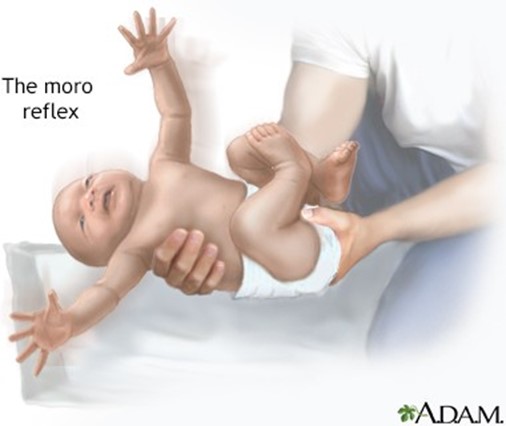A nurse is collecting data from a newborn and notes a swollen area on the head that does not cross the suture line. The nurse should document this finding as which of the following?
Cephalhematoma.
Nevus flammeus.
Caput succedaneum.
Molding.
The Correct Answer is A
Choice A rationale:
Cephalhematoma is the correct answer because it presents as a swelling on the newborn's head confined to one cranial bone and does not cross suture lines. It usually resolves on its own within a few weeks to months but can increase the risk of jaundice due to the breakdown of red blood cells in the hematoma.
Choice B rationale:
Nevus flammeus, also known as a port-wine stain, is a type of vascular birthmark. It presents as a flat, pink, or red mark on the skin and does not involve swelling of the head. This choice is unrelated to the findings described in the question and is therefore incorrect.
Choice C rationale:
Caput succedaneum refers to a diffuse, soft tissue swelling of the scalp that does cross suture lines. It is caused by pressure on the head during delivery, leading to edema and bruising. It typically resolves within a few days after birth.
Choice D rationale:
Molding refers to the shaping of the fetal head during childbirth as it passes through the birth canal. It may cause temporary elongation or molding of the head, but it does not present as a localized swollen area. This choice is not applicable to the findings mentioned in the question and is thus incorrect.
Nursing Test Bank
Naxlex Comprehensive Predictor Exams
Related Questions
Correct Answer is ["The medical term for the soft spot on a baby's skull is fontanelle (or fontanel)."]
Explanation
The medical term for the soft spot on a baby's skull is fontanelle (or fontanel). Fontanelles are gaps between the bones of the skull that allow for the baby's brain to grow and accommodate rapid brain development during infancy. There are typically two fontanelles in a newborn's skull: the anterior fontanelle (located at the top/front of the head) and the posterior fontanelle (located at the back of the head). These fontanelles are composed of connective tissue and remain open during the early months of life, gradually closing as the baby's skull bones fuse together over time. Healthcare professionals often assess fontanelles during routine physical exams of infants. The fontanelle's size and tension can provide valuable information about the baby's hydration status, intracranial pressure, and neurological development.
Normally, the fontanelles should feel relatively soft and flat, indicating proper hydration and brain development. If the fontanelles are sunken or overly tense, it may suggest dehydration or increased intracranial pressure, which requires further evaluation and management. The proper examination of fontanelles is an essential part of newborn care, and any abnormalities observed during assessment should be promptly reported to the healthcare provider for appropriate evaluation and intervention.
Correct Answer is ["A"]
Explanation
Choice A rationale:

The Moro reflex is a normal finding in newborns, including those born post-term. It is a primitive reflex that should be present and indicates a healthy neurological system.
Choice B rationale:
Vernix, a protective white substance that coats the skin in utero, is typically absent or minimal in post-term newborns due to its decreased production as gestation progresses. Therefore, it would not be expected in a post-term infant.
Choice C rationale:
Lanugo, the fine hair covering a newborn's body, is usually present in greater amounts in preterm infants. By the time a newborn is post-term, lanugo is typically sparse or absent, making it an unlikely finding.
Choice D rationale:
This maneuver assesses the flexibility of the newborn's joints. Post-term infants tend to have reduced flexibility and increased muscle tone, making this maneuver more difficult or restricted in this population.
Whether you are a student looking to ace your exams or a practicing nurse seeking to enhance your expertise , our nursing education contents will empower you with the confidence and competence to make a difference in the lives of patients and become a respected leader in the healthcare field.
Visit Naxlex, invest in your future and unlock endless possibilities with our unparalleled nursing education contents today
Report Wrong Answer on the Current Question
Do you disagree with the answer? If yes, what is your expected answer? Explain.
Kindly be descriptive with the issue you are facing.
